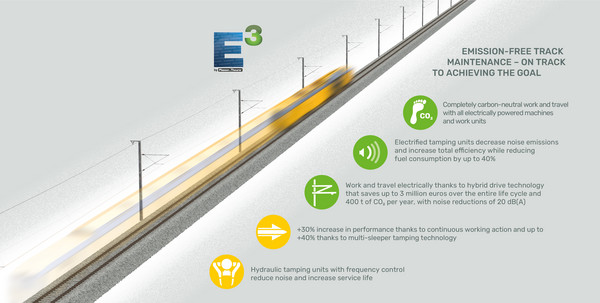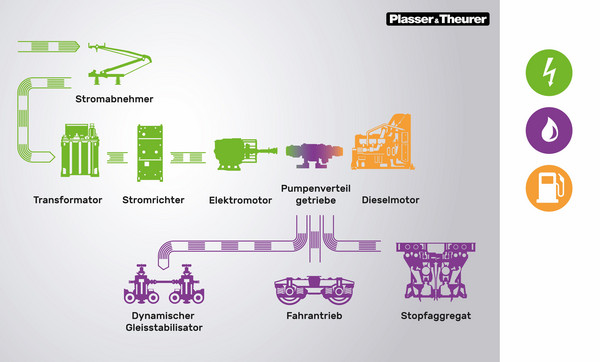When mechanized tamping switched to the use of hydraulics 70 years ago, this ushered in a new era in track maintenance. By using the non-synchronous constant pressure tamping principle and hydrostatic drive, energy efficiency of approx. 70% could be achieved for the first time. Plasser & Theurer continued to develop this basic idea over the last few decades, enriching it with new solutions for customer requirements: multi-sleeper tamping technology, continuous working action, or frequency control for tamping units are examples of important technological advancements. The switch from hydraulic to electric power can be seen as the next groundbreaking step.
In 2014 the drive system was expanded: using overhead-contact-line components to connect it to the traction current paved the way for potentially carbon-neutral operation. During the first step, it was possible to retain the machines’ established basic architecture. In addition to the diesel engine which supplies the energy for the hydraulic drive system, traction current was fed to an additional electric motor via the pantograph, transformer, and power converter. This heralded the arrival of the first evolutionary stage of Plasser & Theurer's E³ technology: the electro-hydraulic drive concept. It was the first time traction current could be used to power a track maintenance machine.


